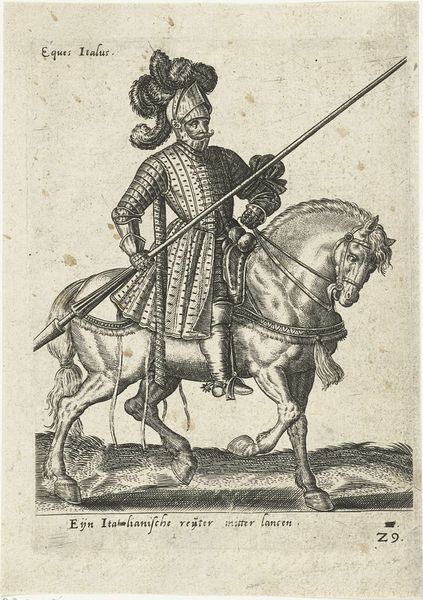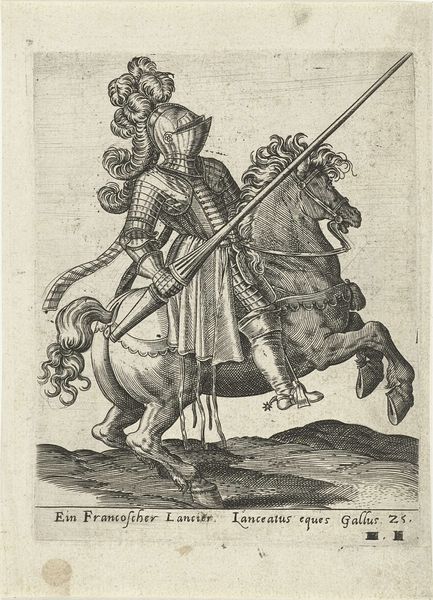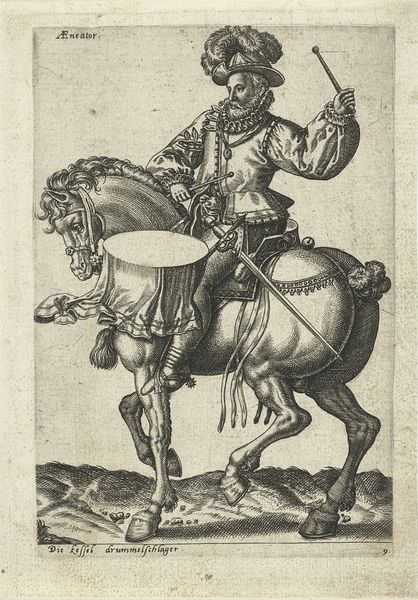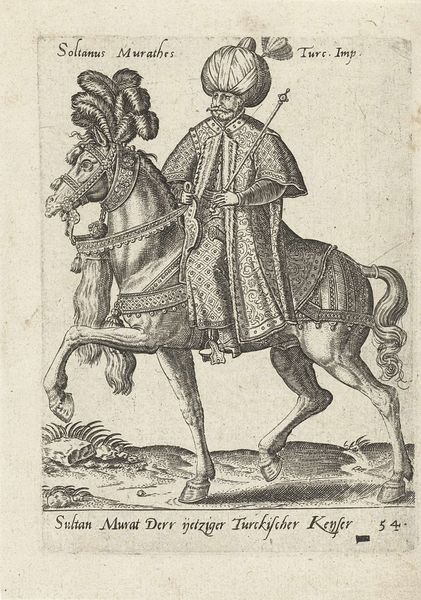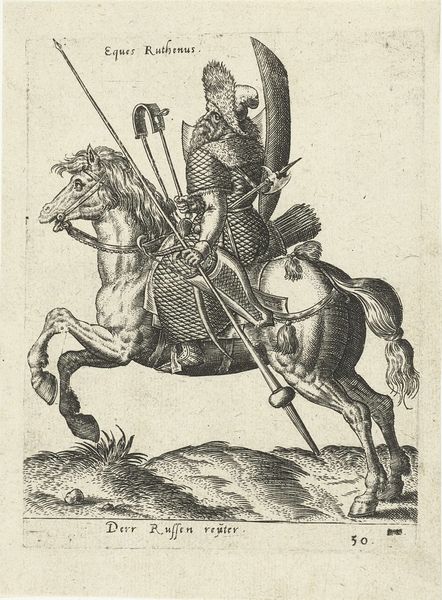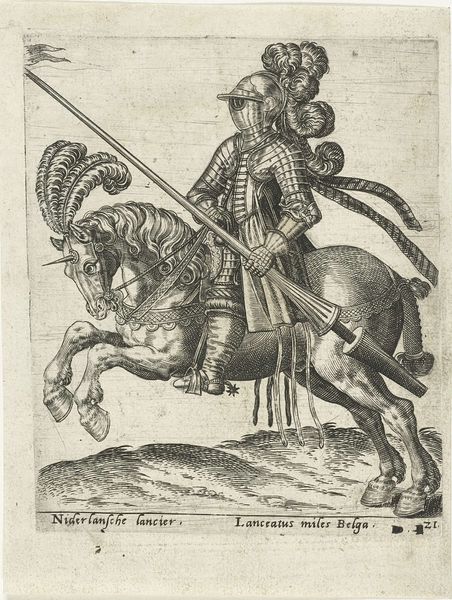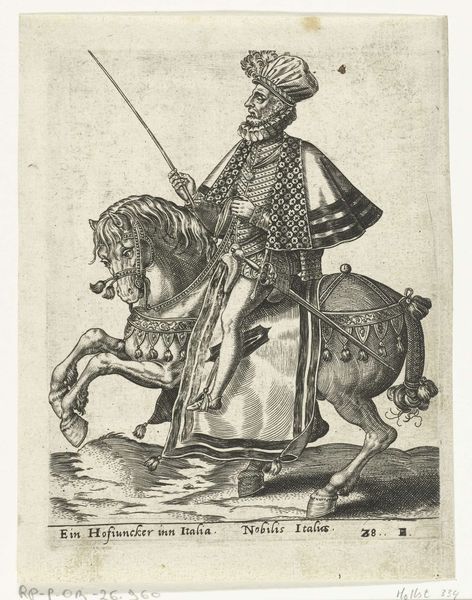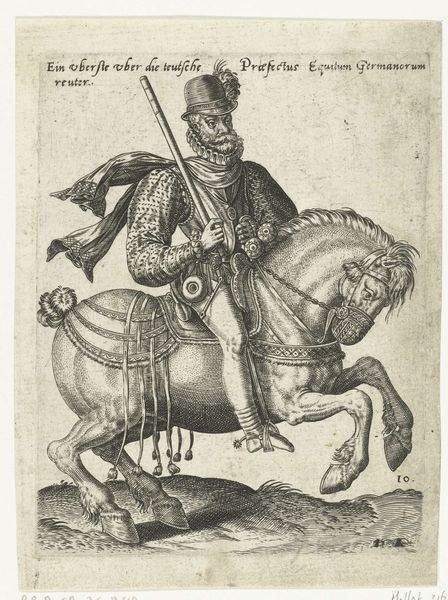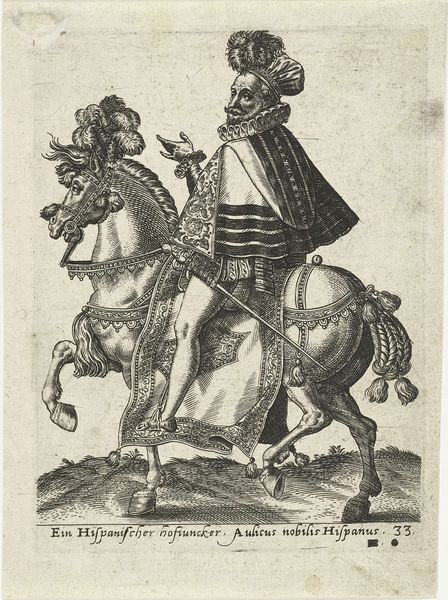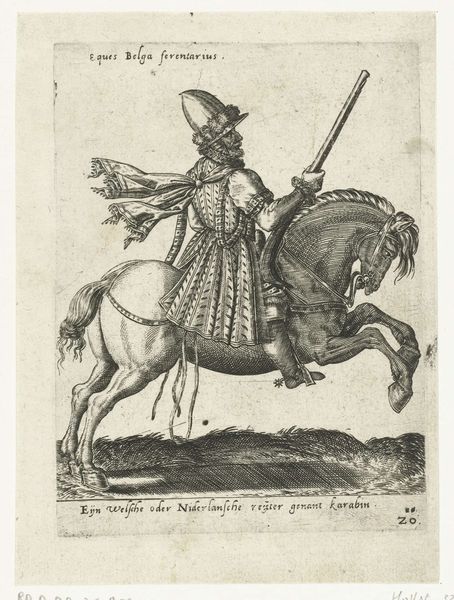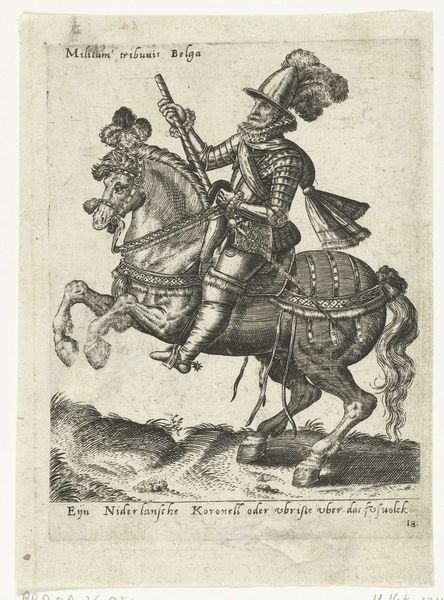
#
quirky sketch
#
pencil sketch
#
sketch book
#
personal sketchbook
#
sketchwork
#
pen-ink sketch
#
sketchbook drawing
#
storyboard and sketchbook work
#
sketchbook art
#
fantasy sketch
Dimensions: height 148 mm, width 96 mm
Copyright: Rijks Museum: Open Domain
This etching of a Dutch soldier on horseback, was made by Abraham de Bruyn in the late 16th century. It’s created with a process that begins with a metal plate, likely copper, on which the artist would have drawn his design with a sharp needle. The plate is then submerged in acid, which bites into the exposed lines, leaving an incised image. Ink is then applied to the plate, filling these grooves, and the excess is wiped away. Finally, the plate is pressed onto paper, transferring the image. Note how the qualities of the etched line define the overall aesthetic. This process is especially well-suited to depicting the textures of the soldier’s armour, creating a rich interplay of light and shadow. The printmaking medium allowed for the mass production of images, fueling a growing market for art and information, and also impacting the labour of artists like de Bruyn. These kinds of popular prints blur the lines between fine art and commercial production.
Comments
No comments
Be the first to comment and join the conversation on the ultimate creative platform.
